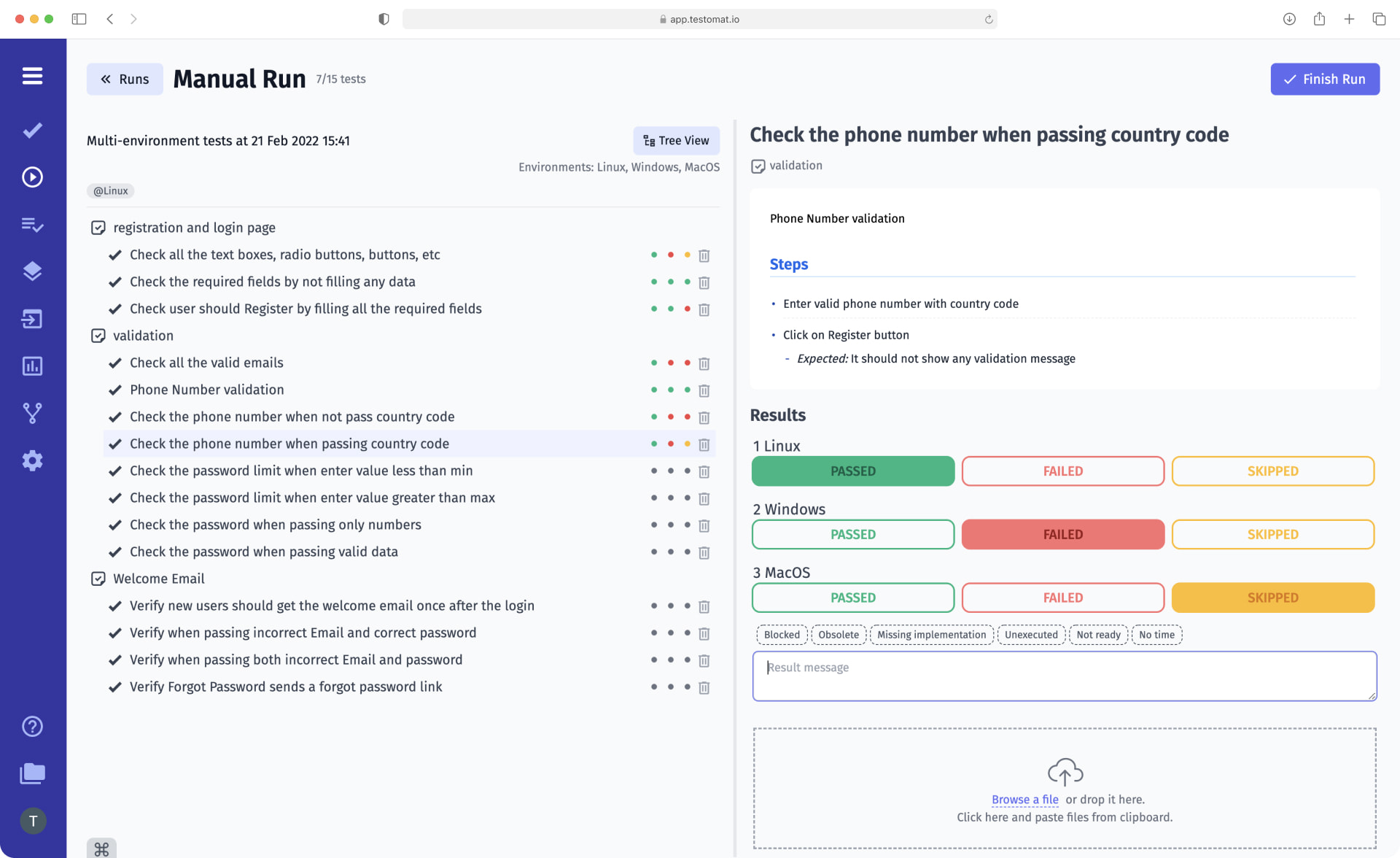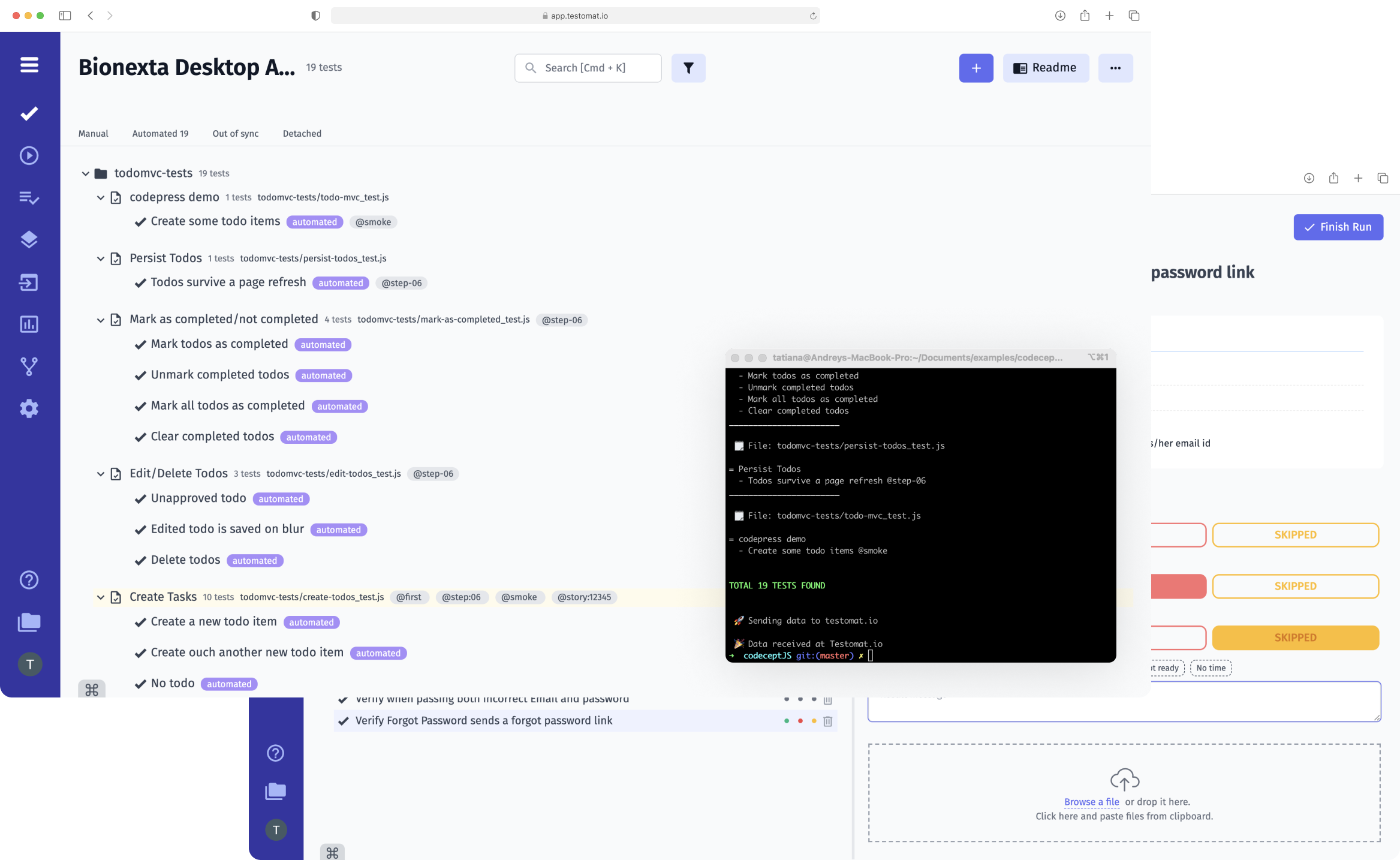
Test management system testomat.io provides a wide range of capabilities to schedule tests, track tests and analyze their results in different environments.
What is the environment in software testing?
A testing environment is a varied software, hardware, network and data configuration according to which testing teams perform different test cases. Security settings, localization settings, performance settings and build or release versions are referred to as test environments too.
Depending on the context, a test environment may represent:
- browsers Chrome, Firefox, Safari
- operating systems and platforms Windows, Unix, Mac OS, Linux and mobile Android and iOS
- device models and screen resolutions
- database server
- hardware specifications and network equipment
- testing stages (development, preproduction, production)
- sprint identification
- any kind of custom attributes or parameters
The main purpose of such environments is to allow QA teams to check system components and uncover errors and issues so the environment must closely replicate real user conditions. Once issues are detected, they can be fixed without affecting real users and negatively impacting their experience.
Test environment vs test requirement
Assigning a test environment to tests per test requirements – is an absolute rule. Thus, they’re explicitly associated with the user story. In turn, requirements are composed according to the needs of the software being tested.
The test environment configuration should replicate real user conditions. Test performing in different environments ensures that the product will work in any environment, on any network, on anyone’s phone on production — and we must have a high degree of confidence that it will indeed meet those requirements. Customers will be satisfied.
Also, test environments are usually fixed in the test strategy document.
Test environment usage in test management logic
Our team care about customer experience so we developed on Settings Dashboard special Environment widget. By default on this widget, you can see default test environments. But you are free to make changes and set up custom environments. After then, these new environments will appear during manual test runs with drop-down list.
Use the test environment feature for:
- Automated tests
- Manual test cases
Note, that environment usage for automated and manual tests are different!
Let’s start with manual test execution on the multi-environment.
How to set test environment manually
Choose your test environments easily. Just pick the needed environment from the dropdown menu. Elements you can set up on the Settings dashboard.
How to run automation scripts in multiple environments
The easiest way of organizing test data is through automation, and by building and deploying the automation in place. You can successfully manage environments through the special CLI command –env attribute.
Analyzing the impact of different environments on the test results
The Test Environments results is shown in your Test Run results and on report so you can distinguish each execution of the Test between the different environments. And in other places that show a list of Test Runs (e.g. Test Plan issue screen).
If you use Test Environments, you may reuse the same Test for multiple test environments and create Test Executions for each one. Let’s say that you have executions for two Test Environments: “Android” and “iOS”. The test is considered as PASS only if the latest executions for Android and iOS are both PASS; otherwise, it will be FAIL.
Well, how its work well if you execute the same Test in two different test environments (e.g., devices) and you want the two results to be consolidated.
Benefits of using Test Environments
- avoid duplication of Tests, whenever you have to run the same test on different environments
- ability to track the latest status of tests on different environments
- ability to track coverage on each environment
- ability to track overall coverage, considering the coverage/results on each environment
- ability to perform reporting, including traceability, per each environment or globally considering all results on all different environments
Test environments are an important part of your software pre-release strategy.
Test environments management
Test Environment Management mainly deals with maintenance and updating of test bed.
- Assigning the test environment to respective teams as per their requirement.
- Try to reduce manual processes by introducing more automation as that will save you time and resources while your team can dedicate their time to building and improving the product instead of tedious manual tasks.
- Furthermore, before creating yet another new test environment, verify if it’s possible to use an existing one. If you already have an existing infrastructure, then that will go a long way in saving you time and money.
- It also goes without saying that you need to consider how to ensure the maintenance of the test environment such as who’s responsible for its maintenance and how to ensure the reliability of the environment.
- Continuous monitoring test environments.
- Removing the outdated test environments and its tools , techniques and other details.
- Identifying test environment issues and resolving those issues.
- Frequent improvement to continuously and effectively evaluate the test environments.
